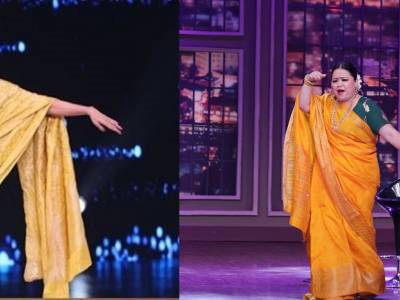Twists in TV serials: Do TRPs leap for joy?
"Today's audiences need to be surprised regularly," said Mushtaq Shiekh, the creative director of SaharaOne. "We need to keep their interests alive and get them involved with our story, keep them on the edge all the time to ensure they connect, relate, and come back the next day." Shiekh said fierce competition was driving channels to pull out all the stops. "It has become imperative to come up with interesting and dramatic twists, new characters and more innovative ways to evoke curiosity in our viewers," he said.
Ashvini Yardi, Colors' programming head, agreed that the satellite TV boom had made viewers more demanding. "I have been watching the business for the past 17 years, since the time of Zee TV," Yardi said. "There was a time when viewers demonstrated programme loyalty and, indeed, channel loyalty. Now, so many channels are at a similar level, in terms of programming. So, you may be watching a show at 8 pm on one channel, and at 8.30 you have flipped to another channel." That is why, Yardi said, it was important to introduce drama, keep the screenplay tight and give audiences what they wanted. "Besides, audiences have different expectations from different channels," he said. "From Colors, they expect something dramatic and different because that is how we started off: with shows that were nothing close to what was being telecast."
Purnendu Shekhar, the writer of Colors' genre-bending "Balika Vadhu', said that channels were recognising the critical need for a gripping story and were granting great autonomy to writers. "Colors is very sensitive and co-operative [when it comes to a writer's independence]," Shekhar said. "I send them a draft and they offer a few suggestions. I inform them about the ones that can be incorporated. In "Balika Vadhu', I contribute 70%. Initially, the channel had asked me about the number of episodes in which the main characters would remain kids. I said, about 100 episodes. The channel guys looked surprised, but now the leap has come after 500 episodes!"
Shiekh of SaharaOne said that such leaps of a channel were closely monitored by its contemporaries. "We keep track of competition and introduce new tacks and storylines to keep up," he said. "Our strategy is to maintain a steady upward-growth curve, and decisions are based on the positioning of the channel. Our aspiration is to constantly offer new and innovative content, keeping in mind viewers' desires. The game is simple: get the eyeballs and keep them stuck on you for a long time...and shock people with surprises so that they come back for more!"
Adgully then asked Yardi to explain the rationale for the "Balika Vadhu' time jump. "Actually, all that was not planned," he said. "It's basically driven by viewer response. The leap for "Balika Vadhu' was planned after 100 episodes, but we introduced it only after 500 episodes. Even in "Uttaran', the girls were supposed to become adults in a month, but eventually it took a year."
Yardi said such plot refreshments drew a newer set of audiences. "Also, those who followed a show sometime in the past probably come back," he said. "However, all sorts of audiences will switch off if they don't like what they see."
As for the dynamics of a plot, Shiekh said that a plot eventually had to die a natural death. "When scripts are written, a timeframe is kept in mind," he said. "To keep a show alive once we have juiced out the entire drama, we like the show to take a generation leap. Sometimes, there is a need for another plot and the time jump provides the justification. At times, you need to show characters at a different phase; so different reasons drive the changes."
Shiekh said the generation leaps offered freshness and a new look to a show, while simultaneously retaining the old charm. "It is certainly a breather because after a certain point, the audiences don't want the story to be stretched out unnecessarily," he said. "It is also a great opportunity to introduce new and glamorous characters. Not every generation leap is a survival plan. "Woh Rehne Waali Mehlon Ki', for example, has successfully completed over1,200 episodes and is still on with two leaps having already been introduced."
Shiekh said that it was besides the point to establish the relationship between TRP jumps and a story's creative twists. "The most important factor, according to me, is the "gut' feel," he said. "If I am running a show, I know what my audience needs. Twists and turns in a show are just the icing on the cake. But what finally matters is the base on which the show stands: its original story! TAM provides the TV Industry with insight and data. Actually, whether what you tested on your audience has worked or not is a no-brainer! If the numbers reflect a jump, audiences have lapped it up. If the numbers fall, they have rejected you!"





















Share
Facebook
YouTube
Tweet
Twitter
LinkedIn